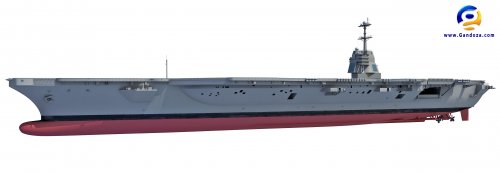Abraham Gubler said:
TomS said:
The issue with VLS and carriers that I've heard isn't interference with the recovery pattern, but concern that the booster cans will end up back on the flight deck if there's a failure.
Whomever told you this was FoS. For starters the missile used by USN carriers for self defence doesn’t have a separate booster (ESSM) but the missile used by the French (who have VLS on carriers) does: Aster. It is also a non-issue as the missile won’t leave the canister if there is a rocket failure and they can be positioned in such a way as to avoid any fall back (at the aft end) if there is some sort of malfunction.
That concern was expressed to me by a couple of action officers over in PEO Ships while I was supporting Ship Self Defense program efforts a decade or more ago (it's been a long time). I trust them.
I misspoke when I used the word "booster" (it's been a long time, as I said) but issue remains. The vertical-launch versions of ESSM have a small Thrust-Vector Control (TVC) module (the "can") that is mounted aft of the tail fins. It's a feature inherited from the vertical-launch RIM-7P, where it was called the Jet-Vane Control (JVC) module. This module containes large control vanes in the rocket efflux; it is used to tip over the missile and get it pointed on the proper azimuth, then is jettisoned as the missile begins its flyout. You can see it in the image below, for example, and it is discussed in
this paper.
That TVC is the chunk that is considered a flight-deck hazard. Positioning the missile launcher at the stern of the ship is no panacea, because you might need the launcher to make engagements ahead of the ship as well as behind, putting the TVC right over the flight deck on jettison.
This is quite different from the much larger booster in missiles like ASTER-15, which stays attached to the upper stage for a significant portion of the flight and is thus well away from the ship at jettison.
Abraham Gubler said:
There are patterns and then there are patterns. In aviation the word means two things. Firstly it means the route through the air that an aircraft flies under ATC direction to land at an airfield and even a carrier. Secondly it means the aircraft flying said pattern.
The big difference between a STOVL carrier and a CTOL one is you almost never have a circumstance when the later is in existence with more than a handful of aircraft. That is a big stacked pattern of planes circling around the carrier waiting their turn to land. Yet in a CTOL carrier is happens every hour and a half. This is the nature of cyclic operations.
And this is why USN carriers continue to have old school box launchers for their ESSM self defence missiles. Because when the cycle is in recovery and they have 20-30 planes circling around they do not have clear airspace to fire a rocket up into it to defeat a threat cresting the horizon. But they can fire a rocket out and under the pattern to defeat the threat.
If you have a large STOVL carrier (like CVF in some iterations), the "Wait" can still be quite sizable. Here's a narrative from a Sea Harrier pilot that talks about the Wait around one of the Invincibles, which took up significant time even with only a couple of aircraft stacked up. The "Low wait" would most certainly be at risk of a VL missile blasting up through the pattern.
http://www.flyingmarines.com/Dits/SHAR_TO.html
However, if there is an attack underway, the carrier will have already dispersed its aircraft; they won't be trying to recover a cycle in the middle of an inbound air raid. For starters, you have to clear out anyone within a couple miles of the carrier just to avoid nasty accidents with CIWS. Except in a very unlikely surprise scenario, there won't be anyone flying around the carrier while it's launching missiles.
PS: I'd really appreciate it if you would stop with the condescension. Using phrases like "full of shit" (even abbreviated) is not the mark of a person interested in an a good-faith conversation, in my experience.


























